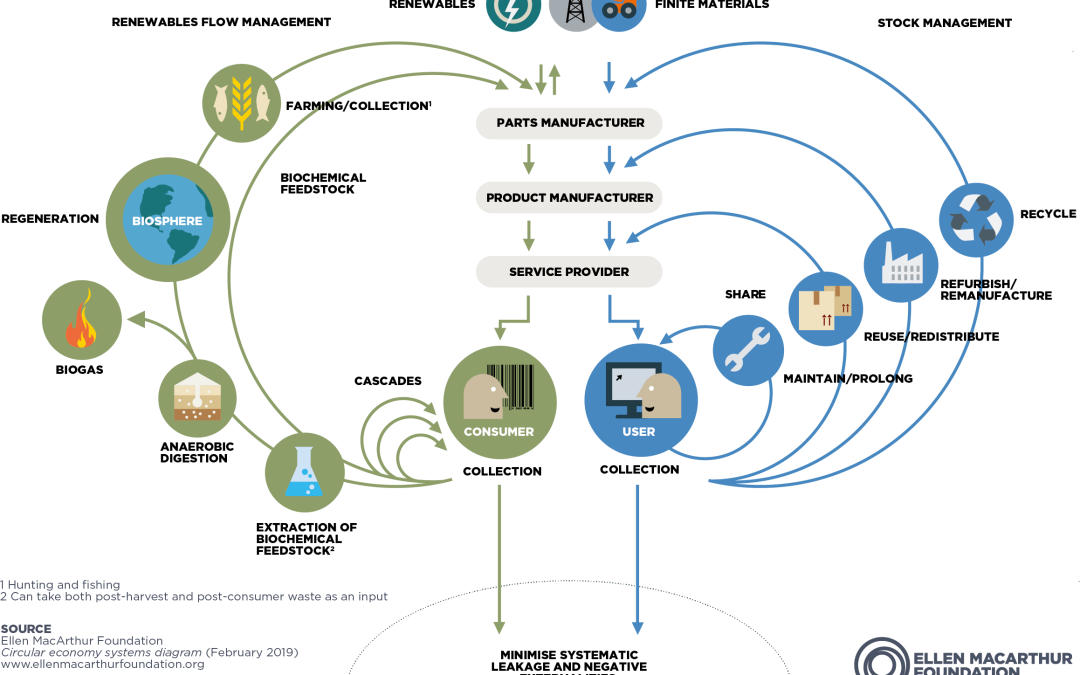You may already know the concept of a technical and biological cycle as a framework for the circular economy.
But how can this concept become a reality?
For transitioning to a circular economy, the two main cycles are divided into smaller loops which show the processes that enable materials and products to stay in circulation or sagely biodegrade.
Let`s have a closer look at how these cycles work with the help of the famous so-called butterfly diagram you can see here.
The circular economy system diagram, known as the butterfly diagram, shows the continuous flow of materials in a circular economy. It is based on the Cradle to Cradle framework that the German chemist Michael Braungart and the American architect William McDonough developed in 2002.
The main principle is to eliminate the concept of waste; waste becomes food.
This principle is derived from nature with its closed nutrient loops. All “waste” is a nutrient for another organism. It consists of two main cycles, in the form of butterfly wings, which show a technical and a biological cycle.
Technical cycle for consumer goods, biological cycle or all products that are biodegradable.
The technical cycle is used for consumer goods, products that are used rather than consumed. The biological cycle is used for all products that are biodegradable.
In the technical cycle, products, parts, and materials are kept in circulation through a variety of processes. In the biological cycle, the nutrients from the biodegradable materials are returned to the earth to regenerate nature. The diagram shows that larger outer loops surround smaller inner loops.
The technical cycle
In the middle of the diagram, you can see the steps to creating the technical product: Beginning with manufacturing parts, followed by manufacturing the whole product, and providing services before the product enters the using phase.
After the using phase, there are different options to keep the product or parts of it in circulation, which you can see in the blue circles. Arranged from the inside to the outside, you see the different processes like collection, sharing, maintaining, reuse, refurbishing, and remanufacturing, and at the outermost circle: Recycling.
The inner loops are where the most value can be kept.
The inner loops are where the most value can be kept because, in these inner circles, the products remain as a whole and, in this way, retain more of the embedded value.
For instance, take a product like a smartphone – a fully functional phone is worth more than the sum of its parts because, additionally to the materials, the time and energy that went into making the phone are not lost.
Therefore, the inner loops, like sharing, maintaining, and reusing, should be preferred above the outer circles where the product needs to be broken down and remade.
The loops also show a cost saving to customers and businesses as they use products and materials that are already in circulation rather than investing in making new ones from scratch.
The outermost loop, recycling, is the least wanted option in a circular economy because it means that the embedded value of a product is lost by reducing it only to its basic materials.
The most important thing is that the products are designed for the respective circulation process from the beginning.
For example, products that are intended for sharing or reuse should be made more durable and easy to be repaired or designed in a modular way so that components can be replaced and upgraded.
It is also essential to design the product for multiple possible loops.
It is also essential to design the product for multiple possible loops, for example, to design a repairable product from recyclable materials.
The biological cycle
On the left-hand side of the butterfly diagram, you can see the biological cycle for all the materials that can biodegrade and safely return to the earth.
This cycle is mainly for all products that are consumed, such as food. But also some other biodegradable materials, such as cotton used in textiles or wood used in furniture, may eventually make their way from the technical cycle into the biological cycle as soon as they have degraded to a point where they can no longer be used to create new products. The biological cycle describes the processes that return nutrients to the soil and help to regenerate nature.
Regeneration of nature
The main principle of the biological cycle is the regeneration of nature.
In the circular economy, we want to build natural capital and not continuously decrease nature. A circular food system returns biological materials to the earth rather than wasting them. The focus is to shift from doing less harm to the environment to actively improving the environment.
Farming
We can manage sources of biological resources, like farms, forests, or fisheries, in ways that can create positive effects for nature. We intend to support farming practices that allow nature to rebuild soils and simultaneously increase biodiversity.
Composting and anaerobic digestion
The microbial degradation of organic matter in the presence of oxygen is described as composting. This biological process involves naturally occurring microorganisms like bacteria and fungi. In this process, food by-products and other biodegradable materials turn into compost. That can be used as a natural fertilizer because it returns valuable nutrients back to the soil. In anaerobic digestion Microorganisms are involved in the process, too, but the process functions in the absence of oxygen. Biogas and a solid residual are produced. Biogas can be used as a source of energy. This energy recovery is part of a circular economy since it is a by-product of the circular process of returning organic material to the soil.
Cascades
These loops of the biological cycle use products and materials that already exist in the economy. For example, making other materials from food by-products, like textiles made from orange peel, shower soap made of rice starch, or ketchup that is made from banana peel.
When the products or materials can no longer be used, they move to the outer loops of the biological cycle and are returned to the soil.
Extraction of biochemical feedstock
There is also an option to use post-harvest and post-consumer biological materials as feedstock. For that step, biorefineries are necessary. With the aid of these, low-volume but high-value chemical products are possible to produce.
Short summary:
The best options for the technical cycle are the processes shown in the inner circles, like sharing and maintaining the products because, in this way, the whole product can stay in the system and not lose the embedded value in materials, energy, time, and effort.
The biological cycle shows the option for biodegradable materials in a circular economy. The best possible option is to support the regeneration of nature through regenerative material production. Nutrients should be used in cascades and finally returned to the soil, so there is no additional necessity to use chemical fertilizers.
If you are in the process of designing a new product it is helpful to use the butterfly circular system diagram to brainstorm ideas how the product or its component can stay in circulation.
Have fun exploring the butterfly diagram as a brainstorming tool!
You can download a circular design checklist here:

